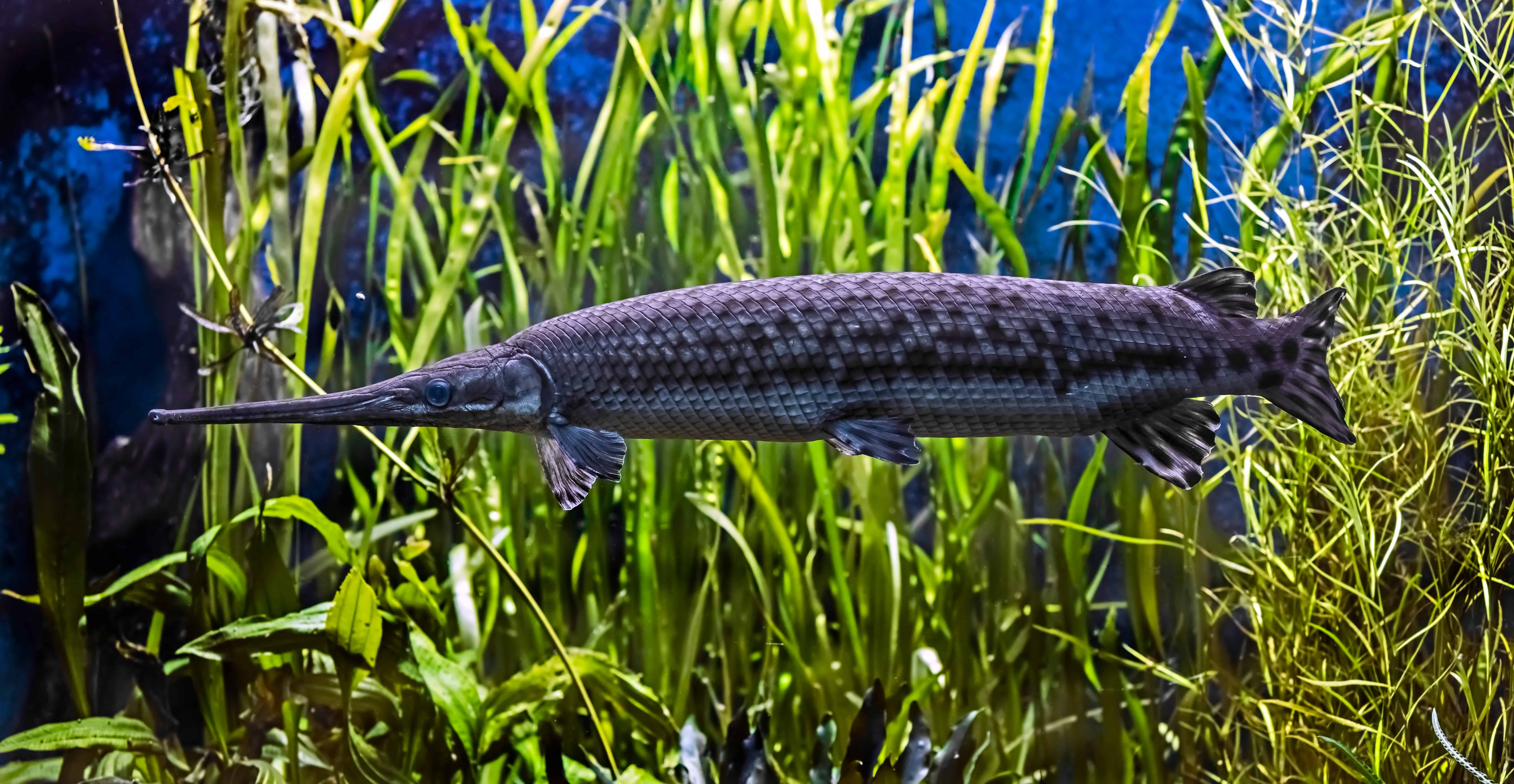Tennessee is one of the best states for fishing. Here you can visit fantastic fishing spots including Davy Crockett Lake, Lake Graham, Glenn Springs Lake, Dale Hollow Reservoir, and Fall Creek Falls. So, what fish can you find in the state? There are about 285 native Tennessee fish species and about 50 more non-native fish. One of the largest fish you can catch in Tennessee is the longnose gar, which easily reaches over 5 feet long. Follow along to discover the largest longnose gar ever caught in Tennessee and the world!
What is the Largest Longnose Gar Ever Caught in Tennessee?
The largest longnose gar ever caught in Tennessee using sportfishing methods weighed 38 pounds and 3 ounces. On April 19, 2002, Mathew A. Norton caught this large gar in the Barkley Reservoir. Technically, there are two records. Using non-sporting methods, anglers Kirk Wood and Alex Bailey, caught a 45-pound and 8-ounce longnose gar on October 7, 2015, in the Kentucky Reservoir.
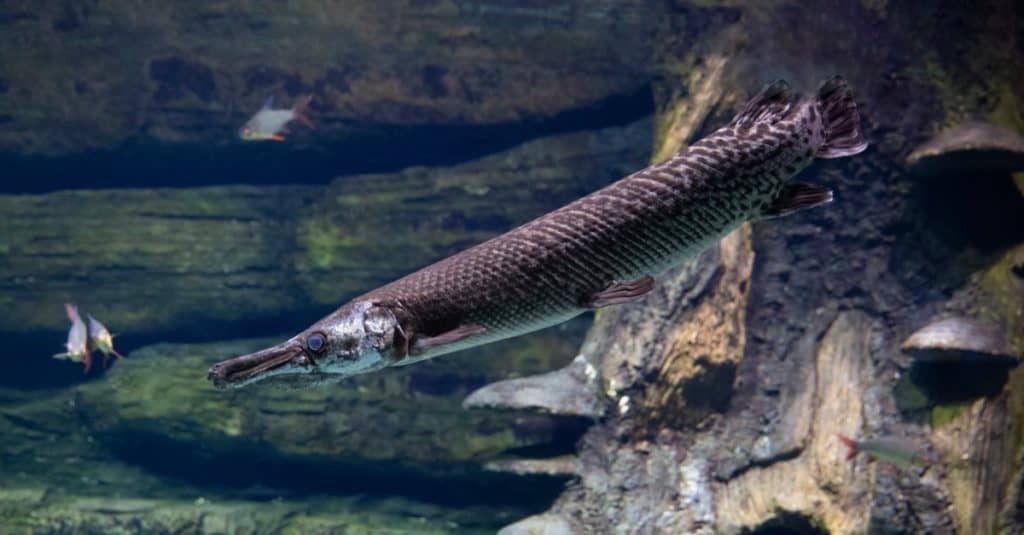
The largest longnose gar caught in Tennessee using sportfishing methods weighed 38 pounds and 3 ounces.
©ivSky/Shutterstock.com
About Longnose Gar
Longnose gar are large and old fish. They are in the Lepisosteus genus and Lepisosteidae family. This ancient genus has existed in North America for around 100 million years. They haven’t changed drastically either and still have a spiral valve intestine. Longnose gar live throughout the world and are listed as Least Concern on the International Union for Conservation of Nature (IUCN) Red List of Threatened Species.
Size and Appearance
Longnose gar are unique-looking fish. Although they look aggressive because of their size and torpedo-like shape, the longnose gar is a slow and docile fish. They are olive green or brown with tough ganoid scales and spotted or striped patterns. They vary in coloration. As their name suggests, longnose gars have long needle-shaped snouts. Sometimes, their ‘noses’ are three times the length of their heads. Longnose gars also have many sharp cone-shaped teeth.

Longnose gar inhabits North America.
©iStock.com/User10095428_393
Distribution and Habitat
Longnose gar has a long range, and their ancestors had an even longer one. Longnose gar ancestor fossils have been found in South American, Asia, North America, Africa, and Europe. Now, they are mainly found in the eastern United States, Cuba, and Central America. They can also be found in parts of northern Mexico touching Texas.
Diet
With how large these animals are, you can imagine they need a lot of food. Their diet changes as they age and grow. Young longnose gar mainly consumes insects, but as they grow, they eat other fish species. Longnose gar are night feeders. They also eat crustaceans and mollusks.
Predators
Are there any animals brave enough to attack a longnose gar? Although docile and slow-moving, longnose gars are large, with tough scales. They have no major predators. Occasionally young longnose gars are attacked by birds. Although American alligators have been recorded attacking longnose gar, these instances are rare and usually opportunistic.
The Largest Longnose Gar Ever Caught in the World
The all-tackle world record for the largest longnose gar ever caught in Tennessee weighed 43 pounds. Rock Shaw caught this impressive longnose gar on May 7, 2017, in Trinity River, Texas. Interestingly, the largest all-tackle world record by length was also caught in Trinity River. On February 18, 2023, Arthur Weston caught a 138 cm longnose gar.
Other Fish in Tennessee
Tennessee is a great state for fishing. You won’t run out of places to visit or things to do! Listed below are a few other fish species you can catch in Tennessee along with fishing hot spots. Who knows, maybe you’ll even catch a new record!
White Bass
Starting our list of other fish species in Tennessee is the white bass. This is a popular fish for anglers, especially during February and March when white bass run upstream to spawn. You can find white bass throughout the state, except for parts of East Tennessee where the elevation increases. One of the best places to fish for white bass is on the Tennessee River.
White bass are silvery-white and pale green freshwater bass. They are found throughout the United States in clear lakes, rivers, and ponds. They are usually about 10 to 12 inches long and weigh less than 5 pounds. The world record white bass weighed 6 pounds and 13 ounces. The largest white bass caught in Tennessee weighed 5 pounds and 10 ounces. Bill Nelson caught this large white bass on September 29, 2003, in the Mississippi River.
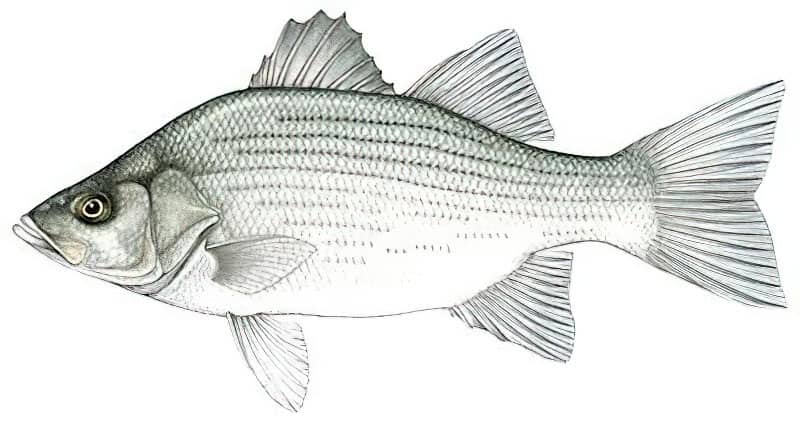
White bass are about 10 to 12 inches long.
Walleye
You can also find walleye in Tennessee. Some of the best places to catch this freshwater fish in the state are Center Hill Lake, the Cumberland River, Dale Hollow Lake, Watauga Lake, and Old Hickory Lake. Walleye are native to parts of North America, including most of Canada and the United States. These freshwater fish are also called yellow pikes or yellow pickerels. Walleye are very common. They are listed as Least Concern on the IUCN Red List.
Walleyes are olive, gold, and silver. They also have shimmering white bellies. Walleyes can reach up to 31 inches long and weigh 20 pounds, sometimes more, although rare. Interestingly, female walleyes are larger than males. So, what’s the record for the largest walleye caught in the state? On August 3, 1960, Mabry Harper caught a gigantic 25-pound walleye in the Old Hickory Reservoir. Mabry Harper has held this record for over 60 years.
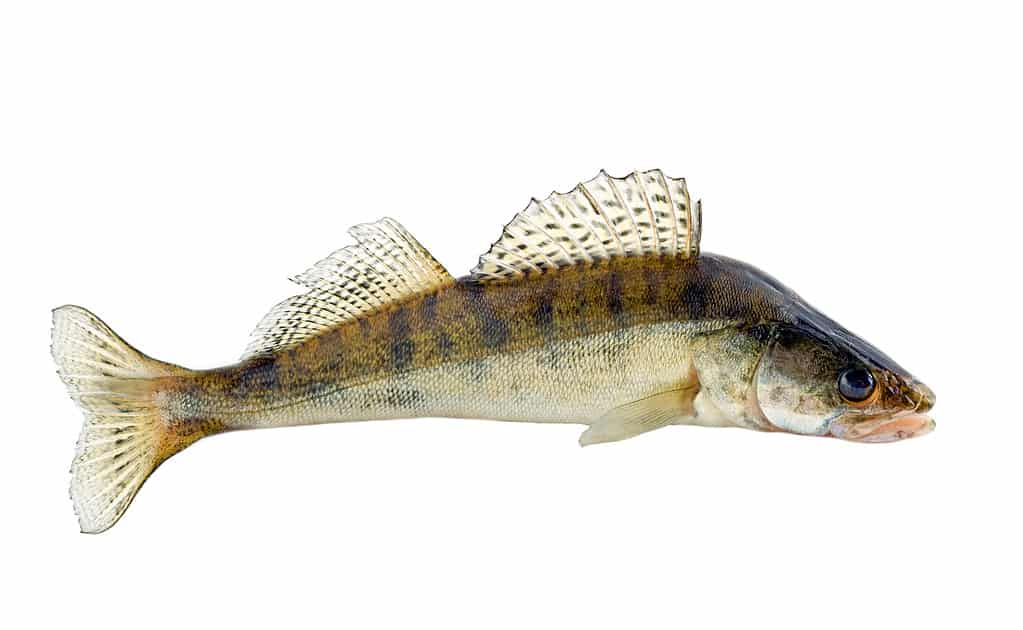
The largest walleye ever caught in Tennessee weighed 25 pounds.
©iStock.com/Vladyslav Danilin
Smallmouth Bass
Another common fish species in Tennessee is the smallmouth bass. Anglers love catching bass as they bring a challenge! If you’re looking for great bass lakes in the state, try visiting Douglas Lake and Chickamauga Lake. Most lakes, rivers, and creeks in the state though have smallmouth bass.
Smallmouth bass are members of the Centrarchidae family. They are abundant and are listed as Least Concern on IUCN Red List. Smallmouth bass are powerful swimmers. They are also slender and yet muscular. No two smallmouth bass look the same. Although they are generally golden-olive to dark green, they also have horizontal stripes and spots. This helps them camouflage into their surroundings, which helps them hunt for prey and hide from predators. Smallmouth bass range in size, but are typically 10 to 20 inches long and weigh less than 5 pounds. The largest smallmouth bass caught in Tennessee weighed 11 pounds and 15 ounces. D. L. Hayes caught this record on July 9, 1955, in the Dale Hollow Reservoir.

Smallmouth bass are members of the Centrarchidae family.
©CLP Media/Shutterstock.com
Bluegill
The next fish on our list is bluegill. They are great small fish to fish for. These popular sunfish are common in most rivers, lakes, and reservoirs. One of the most popular bluegill fishing spots in the state is Reelfoot Lake.
Bluegills are yellow, green, and brown sunfish. They range in color and intensity but have a distinct black spot on each side of their heads. It almost looks like an earmark. They also have dark blue coloration on the sides of their heads and chin. Bluegills are small fish. They are about 4 to 12 inches long. Most weigh less than 2 pounds. There are two records for the largest bluegill caught in Tennessee. Both anglers tied. On December 19, 1987, Brad Pendergrass caught a 3-pound bluegill in Farm Pond, Bledsoe Co. Thelma Grissom also caught a 3-pound bluegill in Tennessee, but on June 27, 1977, in Fall Creek Falls Creek.

Bluegills can weigh up to 4 pounds.
©iStock.com/Dewitt
Rainbow Trout
The last fish species you may encounter in Tennessee is the rainbow trout. Rainbow trout is a very common fish in the state, however, this abundant species isn’t native. Instead, it was introduced to the state during the 1880s. Rainbow trout though is still stocked in many lakes and reservoirs across the state.
Rainbow trout are colorful fish that range in size and color depending on the region/subspecies. Some only grow between 1 to 5 pounds, while others easily reach 20 pounds. The largest rainbow trout caught in Tennessee weighed a whopping 18 pounds and 8 ounces. John H. Morgan III caught this massive rainbow trout on June 17, 2016, in a pond in Polk County.
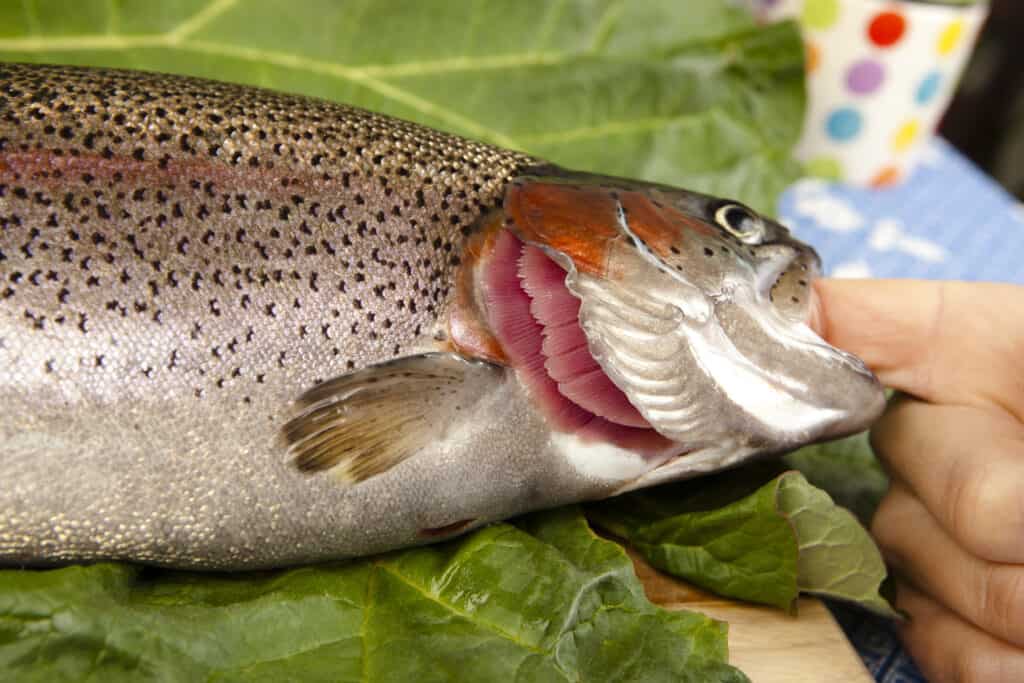
The largest rainbow trout caught in Tennessee weighed 18 pounds and 8 ounces.
©pfluegler-photo/Shutterstock.com
Thank you for reading! Have some feedback for us? Contact the AZ Animals editorial team.

